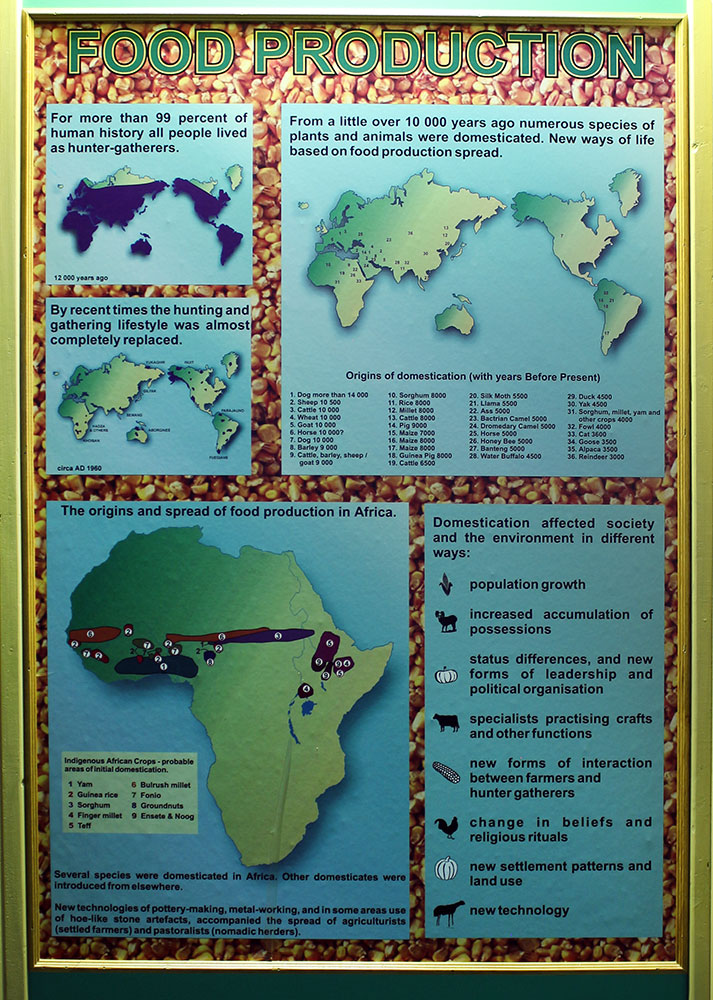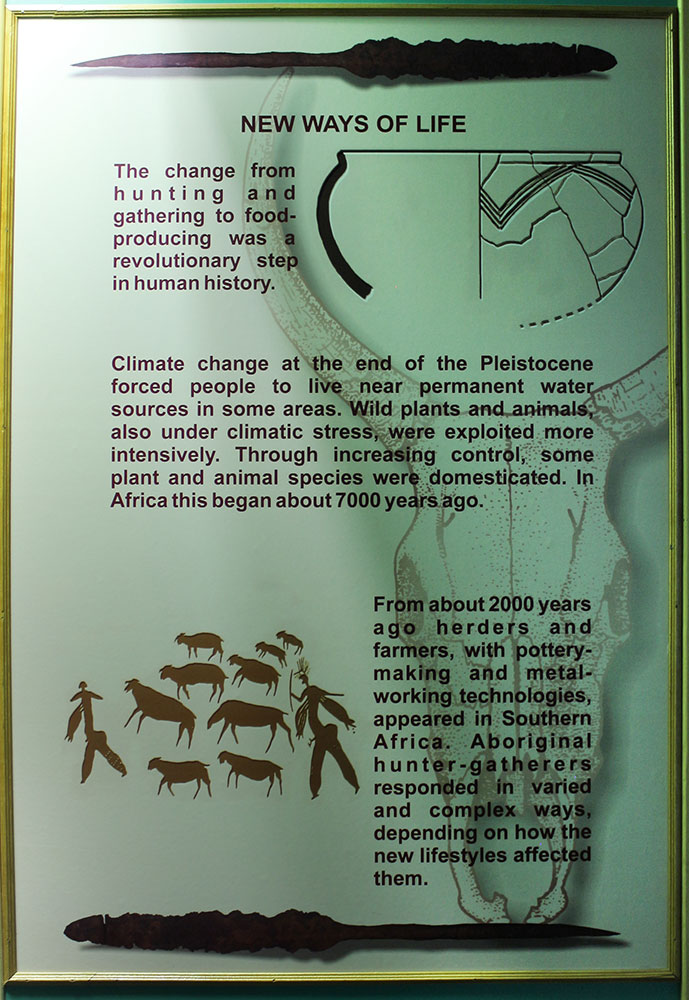Farmers
- Farmers
- https://museumsnc.co.za/new_site/wp-content/uploads/2021/04/farmers-thumb.jpg
- ALL CATEGORIES
- https://museumsnc.co.za/new_site/wp-content/uploads/2021/04/Farmers-Voiceover.mp3
The change from hunting and gathering to food-producing was a revolutionary step in human history.
Climate change some 10 000 years ago forced people to live near permanent water sources in some areas. Wild plants and animals, also under climatic stress, were exploited more intensively. Through increasing control, some plant and animal species were domesticated. This occurred in North Africa about 7000 years ago. From about 2000 years ago herders and farmers, with pottery-making and metal-working technologies, appeared in Southern Africa from the north. Aboriginal hunter-gatherers responded in varied and complex ways, depending on how the new lifestyles affected them.
A pastoralist lifestyle based on the herding of sheep and cattle arose among ancestors of the Khoikhoi. Practising a Later Stone Age technology, they also made pots and used metal items. The new pastoralist lifestyle of nomadic herders spread rapidly to the south western parts of Southern Africa – possibly by a process that included, initially, cultural diffusion if not actual migration.
Agriculturist settlement expanded to south eastern Africa in the first few centuries AD. Their crops included sorghum and millet, and they herded sheep, goats and cattle. They also made pots, similar to those from earlier settlements in East Africa.
Languages spoken by settled farming communities in much of Sub-Saharan Africa belong to the “Bantu” language family. Similarities and differences have been studied to reconstruct language history and possible migration routes of Bantu speakers. Terms for cattle and sheep in Bantu and Khoisan languages are evidence for close, long-term contact and interaction between immigrant farmers and indigenous Khoisan. This population mixing can also be traced in their genetic make-up.


